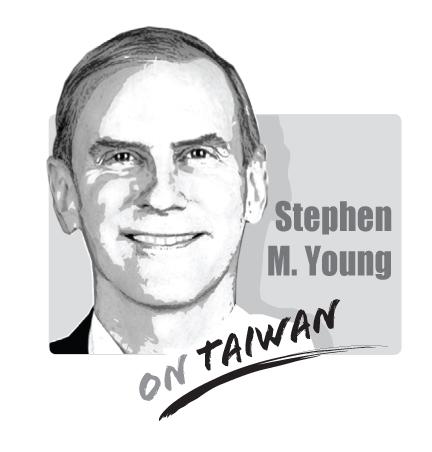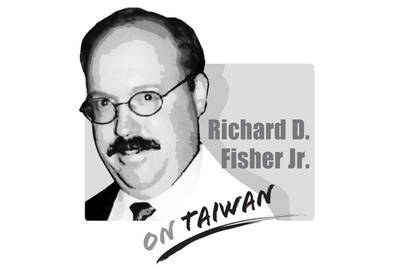Taking a break from all the world’s troubles, I thought I would share some personal thoughts on the role of baseball in Taiwan. I believe the game was introduced to the island early in Japan’s fifty-year occupation. Whatever its origins, it quickly caught on.
When I was living in Kaohsiung in the early sixties (my dad was a military advisor to the Taiwan Army) we saw some pretty good young baseball teams playing in fields around the southern port city. I think there was even a semi-pro team then. We would sometimes watch them playing and I was always impressed by their spirit and professionalism.
My second year there, I attended Jonathan Wainwright High School in Tainan, at that time an hour-long bus ride on a congested two-lane elevated highway. Accidents were common, especially involving those crazy three-wheeled trucks that would careen recklessly down the road.

Our high school baseball team played some games with local Tainan teams, and quickly discovered they were impressively good players. My recollection is that we lost more games than we won. Then the team from the American School up in Taipei would come down to play us, and would generally thrash us. That seemed logical, as their student body was considerably larger than ours down south.
I found additional firsthand evidence of Taiwan’s proficiency in baseball in 2009 when my wife Barbara and I visited Red Leaf Village in southeastern Taiwan. The citizens of Red Leaf Village, in the hills above Taitung, were aboriginal tribesmen from the Bunun tribe, preserving traditional Taiwanese culture. Somehow they had taken a fancy to baseball, and organized a local team. Often they were reduced to practicing with homemade wooden bats and even rocks, when baseballs were hard to find. What they lacked in equipment, the villagers made up for with energy and spirit.
Famously, in 1968 their little league team beat a vaunted Japanese team. Local folks still talked about this match over half a century later when I visited their scenic hillside village looking down on the flatlands and the blue Pacific to the east. My wife Barbara and I thoroughly enjoyed talking with them about their moment in the sun. We toured their small museum and marveled at the reminiscences of the remaining members of the victorious team. Just down the hillside from Red Leaf we also stopped in at a Neolithic site being excavated by a local man who received his Ph.D in anthropology at Rutgers University in New Jersey. I mention this simply to highlight the wide range of talent the island generated.
Taiwan has contributed several players to the American big leagues. One of the most notable was Tainan-born Wang Chien-ming (王建民). He debuted with the New York Yankees in 2005 and played from 2005 to 2016. I had the opportunity to meet with Wang in AIT when he came into our offices in 2009 to renew his visa. He and his wife joined me for an extended conversation in my office when I was serving as AIT Director. I remember Wang telling me with a laugh that he could easily walk down the streets of New York City and not be recognized. But when he visited his family in southern Taiwan, he was regularly mobbed by local fans.
Other notable Taiwan players who made it to the American major leagues include Hu Chin-lung (胡金龍), who played for the Los Angeles Dodgers and the New York Mets between 2007 and 2011, pitcher Kuo Hong-chih (郭泓志), who pitched for the Los Angeles Dodgers from 2005 to 2011, Chen Wei-yin (陳偉殷), who played in the majors from 2012 to 2019, and Huang Wei-chieh (黃暐傑) and Wang Wei-chung (王維中), who played for various teams between 2014 and 2019. I believe the fact that youngsters in Taiwan started playing baseball at an early age, and enjoyed ample opportunities to refine their skills in Taiwan professional leagues, was central to their success. Taiwan’s being blessed by generally mild weather all year round doesn’t hurt the game either.
I have fond memories driving along the north-south highway on summer evenings, with baseball diamond lights shimmering in the cool night air. It seemed to be an integral part of the island culture that young men would play baseball after a long day at their day jobs.
My wife Barbara and I enjoyed going to local ballgames when we could. The cheerleading and the charged atmosphere seemed to underscore that — like most everything else the people of Taiwan do — they throw themselves into athletic activity with the same gusto that they bring to their professional life.
Let me close with some concerns about the future fate of what has been called “America’s pastime” — baseball. While relieved that the major leagues here in the United States avoided a disastrous players’ strike in time to allow the season to begin on time, greedy owners and agents have driven the cost to the consumer sky high. This at a time when football, basketball, tennis and hockey have been competing for the spectator’s attention and money.
Speeding up the pace of baseball games is one solution. Curtailing the burgeoning cost of going to see a major league game — from tickets to parking to concessions — is another idea worth exploring. Young players and their rapacious agents seem to recognize no limit to the price the end consumer (the fan) is willing to spend to attend a game.
I will close on an optimistic note. The game itself is fundamentally healthy. Yes, we can still tweak the pace and excitement elements a bit more. What is key is that youngsters still go out and play the game themselves, in organized leagues as well as pick-up games. It is great that baseball is now an Olympic sport (where Taiwan’s national teams have excelled). This represents another draw for those with talent to invest in their skills and strive to continue the long and glorious history. Who knows, with a little bit of luck and vision, baseball could regain its status as the world’s favorite pastime!
Ambassador Stephen M. Young (ret.) lived in Kaohsiung as a boy over 50 years ago, and served in AIT four times: as a young consular officer (1981-’82), as a language student (1989-’90), as Deputy Director (1998-2001) and as Director (2006-’9). He visits often and writes regularly about Taiwan matters. Young was also US Ambassador to Kyrgyzstan and Consul General to Hong Kong during his 33-year career as a foreign service officer. He has a BA from Wesleyan University and a PhD from the University of Chicago.
Concerns that the US might abandon Taiwan are often overstated. While US President Donald Trump’s handling of Ukraine raised unease in Taiwan, it is crucial to recognize that Taiwan is not Ukraine. Under Trump, the US views Ukraine largely as a European problem, whereas the Indo-Pacific region remains its primary geopolitical focus. Taipei holds immense strategic value for Washington and is unlikely to be treated as a bargaining chip in US-China relations. Trump’s vision of “making America great again” would be directly undermined by any move to abandon Taiwan. Despite the rhetoric of “America First,” the Trump administration understands the necessity of
In an article published on this page on Tuesday, Kaohsiung-based journalist Julien Oeuillet wrote that “legions of people worldwide would care if a disaster occurred in South Korea or Japan, but the same people would not bat an eyelid if Taiwan disappeared.” That is quite a statement. We are constantly reading about the importance of Taiwan Semiconductor Manufacturing Co (TSMC), hailed in Taiwan as the nation’s “silicon shield” protecting it from hostile foreign forces such as the Chinese Communist Party (CCP), and so crucial to the global supply chain for semiconductors that its loss would cost the global economy US$1

US President Donald Trump’s challenge to domestic American economic-political priorities, and abroad to the global balance of power, are not a threat to the security of Taiwan. Trump’s success can go far to contain the real threat — the Chinese Communist Party’s (CCP) surge to hegemony — while offering expanded defensive opportunities for Taiwan. In a stunning affirmation of the CCP policy of “forceful reunification,” an obscene euphemism for the invasion of Taiwan and the destruction of its democracy, on March 13, 2024, the People’s Liberation Army’s (PLA) used Chinese social media platforms to show the first-time linkage of three new
Sasha B. Chhabra’s column (“Michelle Yeoh should no longer be welcome,” March 26, page 8) lamented an Instagram post by renowned actress Michelle Yeoh (楊紫瓊) about her recent visit to “Taipei, China.” It is Chhabra’s opinion that, in response to parroting Beijing’s propaganda about the status of Taiwan, Yeoh should be banned from entering this nation and her films cut off from funding by government-backed agencies, as well as disqualified from competing in the Golden Horse Awards. She and other celebrities, he wrote, must be made to understand “that there are consequences for their actions if they become political pawns of